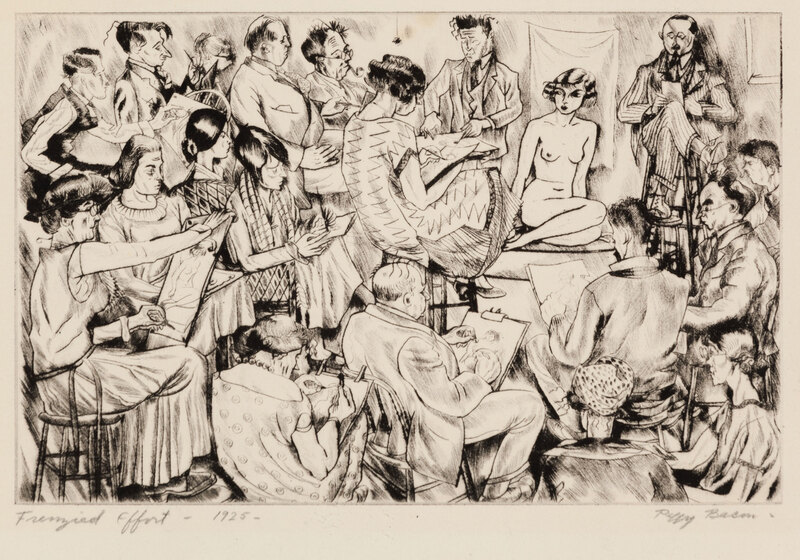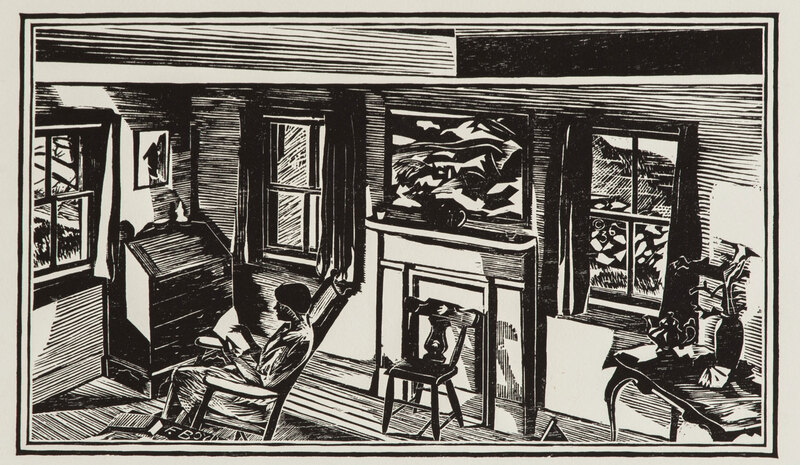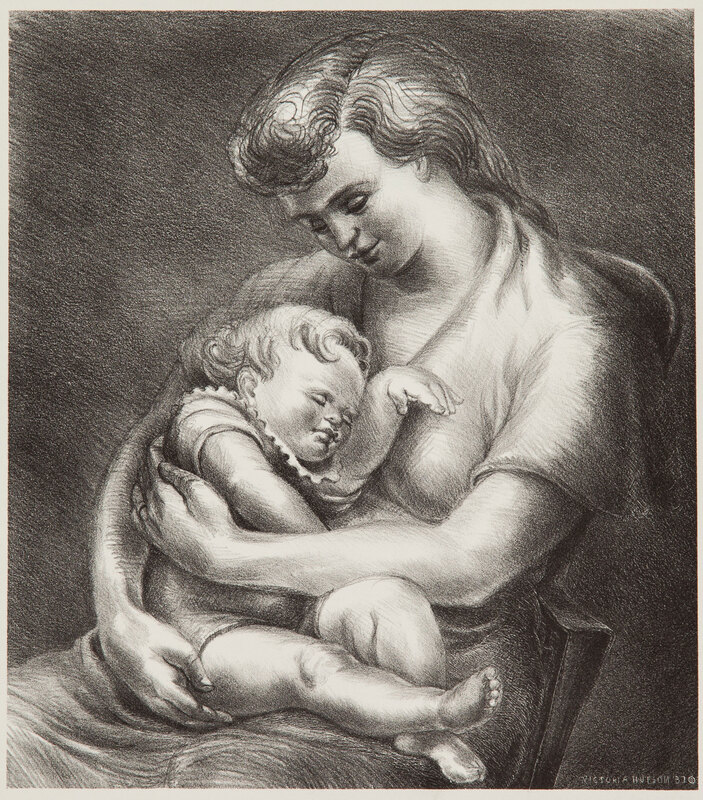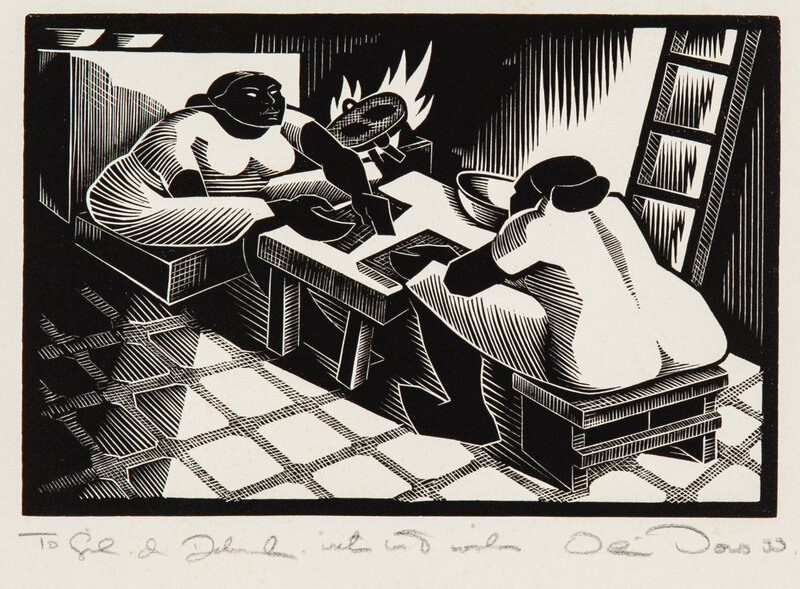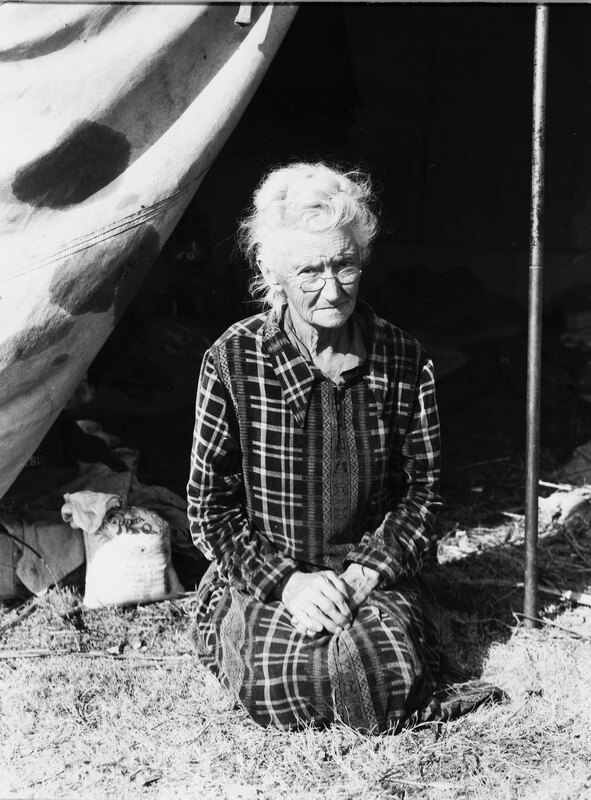Women
Women’s experience in the early twentieth century included, at least for some, the right to vote, access to higher education and wider opportunities in the workplace. With the onset of the Great Depression, women did not greatly benefit from New Deal projects, though they entered new fields to satisfy the need for workers during the Second World War. Nevertheless, the ideal continued of women’s work centered in the home and with children.
Women’s experience in the 1930s was full of contradictions. During the fast-paced 1920s, some women had gained new opportunities, ranging from the right to vote, enshrined by the 19th amendment in 1920, to a growing number of women enrolled in universities and colleges. These newly-won aspects of independence, however, existed in tension with the continued expectation of women’s maternal role. The Wall Street Crash in 1929 and subsequent Great Depression only exacerbated these tensions. One of the biggest debates concerned women’s employment. In this decade, over 80% of Americans believed that a married woman should not work. Instead, most Americans and the US government agreed that available jobs needed to go to men, who were seen as the natural breadwinners. As a result, many New Deal programs catered exclusively to young, white men. However, many women still had families to feed, and took on employment wherever they could. Some made the decision to delay marriage and childbirth in this decade so that they would not lose their job, and as many as six million single women went to work to support their families. By 1940, almost 30% of all women in the US were employed, a number that notably doesn’t capture the domestic labor that most women undertook every day within the family.
This conflict between the imagined ideal of male labor and the lived reality of women’s lives appears in the art of the 1930s. Few of the laboring bodies represented in this decade were female. Instead, the dominant portrayal of women remained domestic—artists often depicted them within the home, or with a child nearby. This portrayal is not so much inaccurate as incomplete: many women did continue to care for home and children, but those six million working women, especially non-White women who historically had to work to supplement their husband’s poor wages, are often missing.
However, even while art in the 1930s as a whole tended to hide women’s labor, federal art programs provided essential funding for female artists, and the new belief in a more democratic approach to art brought new prestige to the portrayal of domestic life.
––CCG
Peggy Bacon (American, 1895 – 1987)
Frenzied Effort (The Whitney Studio Club), 1925
drypoint; 11 ¾ x 13 ¼”
Binghamton University Art Museum, 2017.7
gift of John C. Copoulos ‘73
Peggy Bacon was personally and professionally steeped in the art world as both the daughter and wife of artists. A native of New England, she settled in New York City and became well-known for her satirical prints.
Here, Bacon depicted a scene from the Whitney Studio Club in Manhattan’s bohemian Greenwich Village. Art students, men and women alike, crowd around a nude female model, which had long been considered an unsuitable subject for female artists. Bacon brings her satirical eye to the print, including images of herself and her contemporaries in exaggerated form. You can find Bacon, wearing glasses, in the back row of artists, toward the left of the image. Her friend and distinguished artist Mabel Dwight is in the lower left foreground, wearing a large black hat and glasses. Their frenzied efforts to capture the model in front of them, as well as those of the spider dangling from the ceiling, are humorously referenced in the print’s title.
––CCG
Fiske Boyd (American, 1895 – 1975)
Interior, 1936
woodcut; 13 x 18”
Binghamton University Art Museum, 2016.4.105
gift of Gil and Deborah Williams
Interpretive text has not been prepared for this object.
Victoria Hutson Huntley (American, 1900 – 1971)
Babe in Arms, 1937
lithograph; 17 x 12 ½”
Binghamton University Art Museum, 2016.4.155
gift of Gil and Deborah Williams
Interpretive text has not been prepared for this object.
Ilonka Karasz (American, 1896 – 1981)
On the Lawn, 1936-37
screenprint; 18 ¼ x 13”
Binghamton University Art Museum, 2016.4.312
gift of Gil and Deborah Williams
Interpretive text has not been prepared for this object.
Olin Dows (American, 1904 – 1981)
Tortilla Makers, 1933
wood engraving; 7 x 8 ¼”
Binghamton University Art Museum, 2016.4.164
gift of Gil and Deborah Williams
Olin Dows produced this piece around the time that he became an administrator of the Public Works of Art Project. He would serve in other important administrative roles in federal relief to artists, and later was charged with making a pictorial record of the US Army’s European campaign during the Second World War.
Like many American artists of his generation, Dows made several trips to Mexico in the 1930s, where he was inspired both by his artistic colleagues and the life of the people he encountered there. This wood engraving shows two Mexican women hunched over a small table engaged in the traditional art of tortilla making; in the background, tortillas cook in a comal, the traditional flat griddle, over a fire. Dows places his scene along a dramatic diagonal running from lower right to upper left, simplifying the heavy bodies of the women and their kitchen setting into the stark black-and-white contrasts of the woodcut engraving.
––CCG
Dorothea Lange (American, 1895 – 1965)
Grandmother of 22 Children, from a farm in Oklahoma. 80 Years old, now living in a camp [...], November 1936, printed 1988
gelatin silver print; 10 x 8”
Binghamton University Art Museum, 1988.43
purchase with funds from Mr. and Mrs. Morton B. Harris
Dorothea Lange is one of the most recognized artists of the Great Depression. Born in Hoboken, New Jersey, she studied photography at Columbia University, then in the 1930s, she became a photojournalist for the Farm Security Administration and travelled across the country documenting rural America.
In this photograph, Lange captured a grandmother who had fled Oklahoma, which experienced the worst of the Dust Bowl. She kneels in front of her tent, her aged hands resting on her knees, and looks with some apprehension out at the viewer. The photographer noted the woman’s words: “If you lose your pluck you lose the most there is in you—all you’ve got to live with.” Elderly Americans faced the highest rates of poverty in the US in the 1930s, which helped drive the passage of the Social Security Act in 1935.
––CCG
Leo Meissner (American, 1895 – 1977)
Assembly Line, 1944
wood engraving; 12 ¼ x 10”
Binghamton University Art Museum, 2016.4.388
gift of Gil and Deborah Williams
A still life might typically be expected to show us an arrangement of cut flowers or a basket of fruit, but in this print Leo Meissner gives us, instead, a lady’s toilette: her fashionable hat, calfskin gloves, and lipstick and compact, all carefully presented on a tabletop. Their owner is absent, but these objects conjure up her elegant presence in our mind’s eye; we can imagine her donning each in preparation for heading out on the town.
Meissner’s title, however, adds another layer of complexity—what, precisely, does Assembly Line mean to convey? We might think that he is showing us how feminine beauty is itself a construction, something “assembled” out of the various chic items presented here. And, at a moment when so many working-class American women were employed in the war industries, we might also detect a hint of irony in the contrast implied between their labor and the “work” of keeping up with fashion.
––TMD
